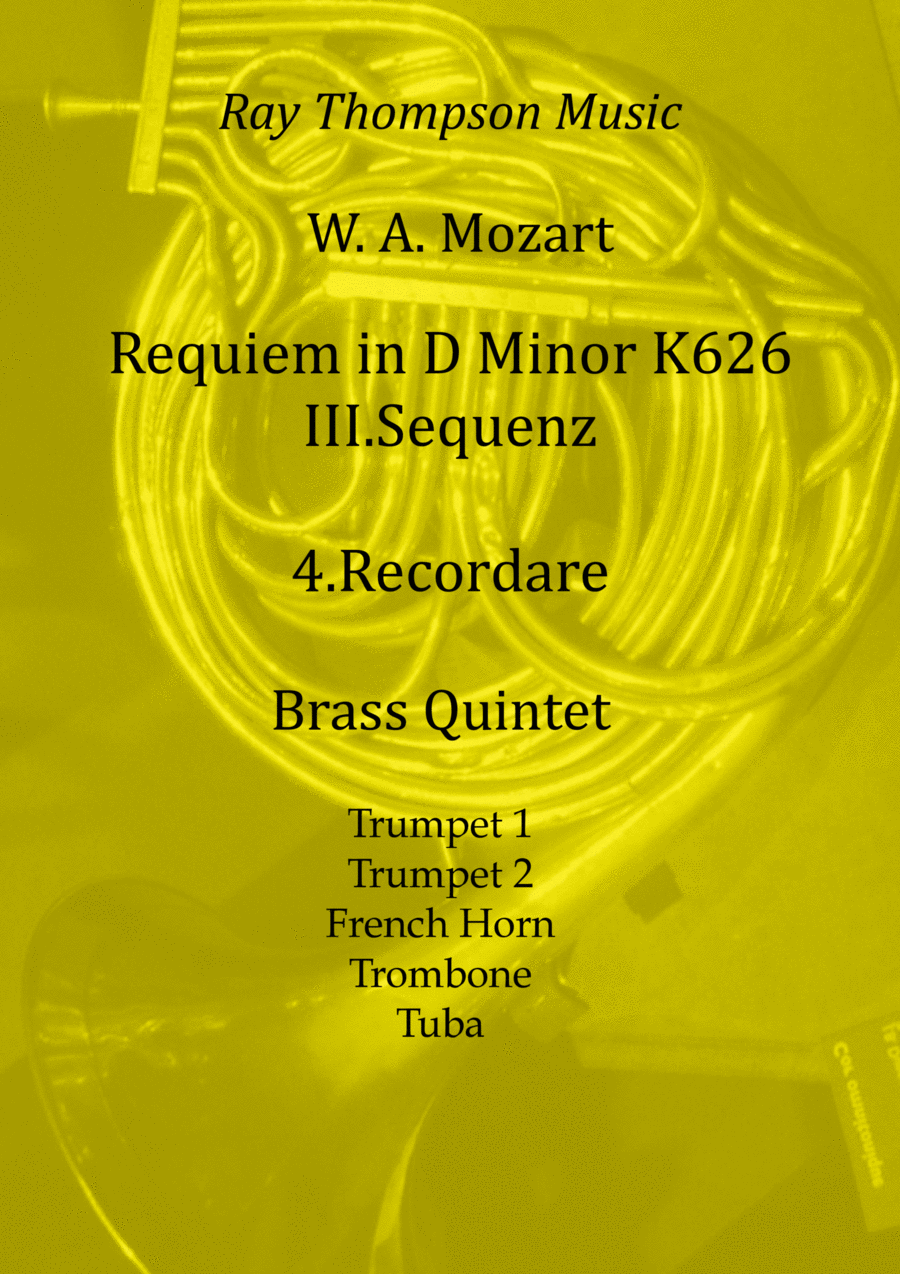Horn,Trombone,Trumpet,Tuba - Level 4 - Digital Download SKU: A0.1110352 Composed by Wolfgang Amadeus Mozart. Arranged by Ray Thompson. Classical,Religious,Sacred. 21 pages. RayThompsonMusic #712690. Published by RayThompsonMusic (A0.1110352). Arranged standard brass quintet. Alt alto hn in Eb provided for Horn, and Euphonium in Treble Clef for trombone. The music has been spread throughout, to avoid a constant tutti! Using A euphonium instead of a trombone will give a smoother sound! The Requiem in D minor, K. 626, is a requiem mass by Wolfgang Amadeus Mozart (1756â1791). Mozart composed part of the Requiem in Vienna in late 1791, but it was unfinished at his death on 5 December the same year. A completed version dated 1792 by Franz Xaver Süssmayr was delivered to Count Franz von Walsegg, who commissioned the piece for a requiem service on 14 February 1792 to commemorate the first anniversary of the death of his wife Anna at the age of 20 on 14 February 1791. This is no 4 of the Sequenz Recordare At 130 measures, the Recordare (Remember) is the work's longest movement, as well as the first in triple meter the movement is a setting of no fewer than seven stanzas of the Dies irae. The form of this piece is somewhat similar to sonata form, with an exposition around two themes (mm. 1â37), a development of two themes (mm. 38â92) and a recapitulation (mm. 93â98). It suits the brass quintet. Section III of the requiem is titled âSequenzâ (sequentia or sequence). It is made up of the following pieces I have arrangements of all of them, for varying types of ensemble * Dies irae * Tuba mirum * Rex tremendae * Recordare * Confutatis * Lacrymosa. I have also arranged Mozarts Motet âAve Verum Corpusâ K618.
